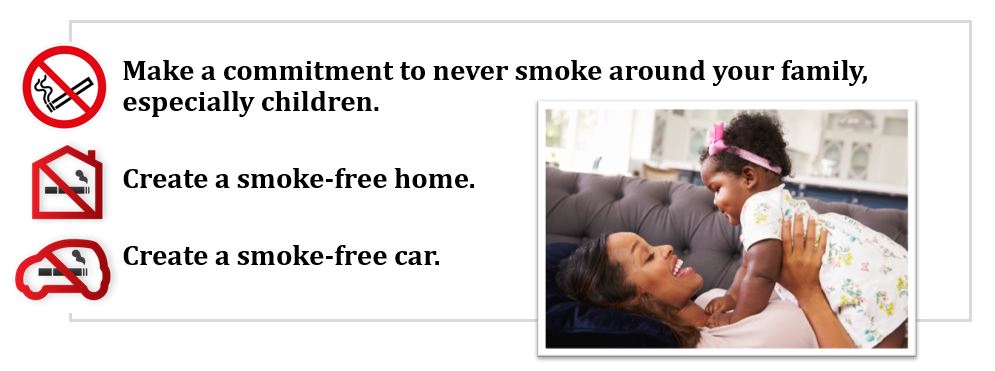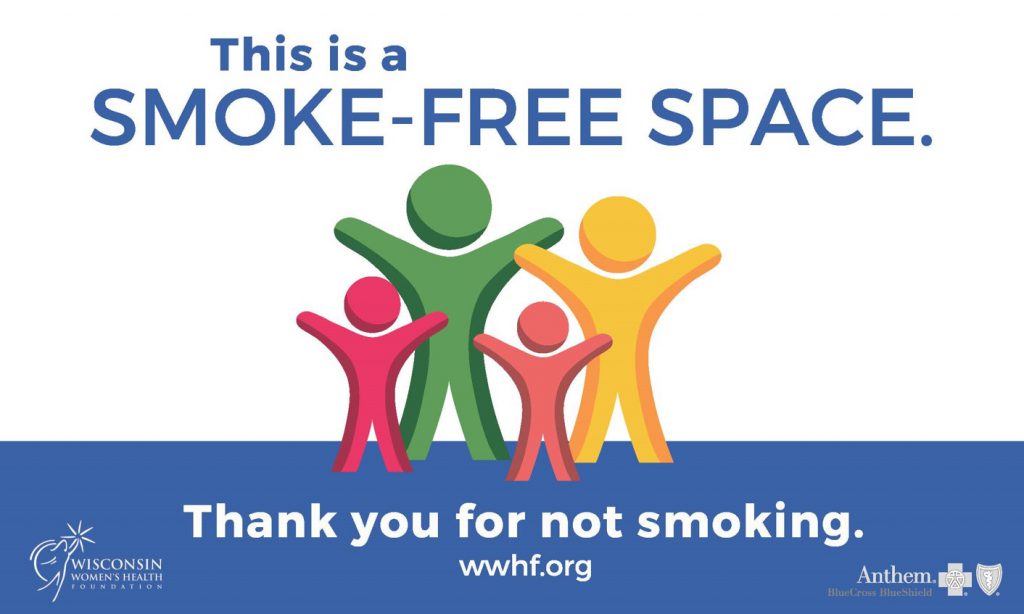Air, oxygen, breath – without them, there is no life. That’s why lung health is so important, and why November is dedicated to supporting healthy lungs by spreading awareness about Lung Cancer and its risk factors.
Of all the lung cancer risk factors (exposure to radon, air pollution, etc.), there’s one big one, and that’s tobacco. Smoking accounts for 80-90% of all lung cancer cases, according to the American Lung Association, and secondhand smoke also plays a role. That means, even if you don’t smoke, you are at risk. There is NO safe level of exposure to secondhand smoke and the hundreds of poisonous chemicals it contains.
Therefore, not just during November, but all year round, reducing tobacco exposure is important. Quitting smoking is the best way to make sure you and others are protected from tobacco smoke (check out the WWHF First Breath Program or the Wisconsin Tobacco QuitLine for free quit smoking help), but there are also steps that can be taken in the meantime to help create spaces that are free from smoke. We know smoking cessation isn’t an easy or overnight process.
Protect yourself and your loved ones from secondhand smoke (the smoke you can see off the end of a lit cigarette or when someone blows out after taking a puff) and thirdhand smoke (the tobacco smoke you can’t see but that sticks to soft surfaces) by:

The goal is to keep smoke out of living areas in the first place. Strategies like opening a window, turning on a fan, using air fresheners, or smoking in another room or part of the car do NOT work. They might cover up the smell, but the toxins from tobacco are still there. The only way to truly protect others is to avoid smoking or to keep smoke outside.
-
Make your entire home and car smoke-free.
-
Prepare for going smoke-free by setting an official smoke-free date (Perhaps November 21st? – The Great American Smokeout). Remove temptations like ashtrays and lighters (keep them outdoors or in your trunk), and deep clean to get rid of the smell and to remove thirdhand smoke.
-

Let others know about your rule. Put a “no smoking” sign on your door or windows, and have a smoking areas outside for visitors who smoke.
-
If you can’t make the entire home smoke-free, commit to keeping children’s sleeping and play areas smoke-free.
-
After smoking, take a shower and change clothes, or wear a “smoking coat” that can be taken off and kept outside.